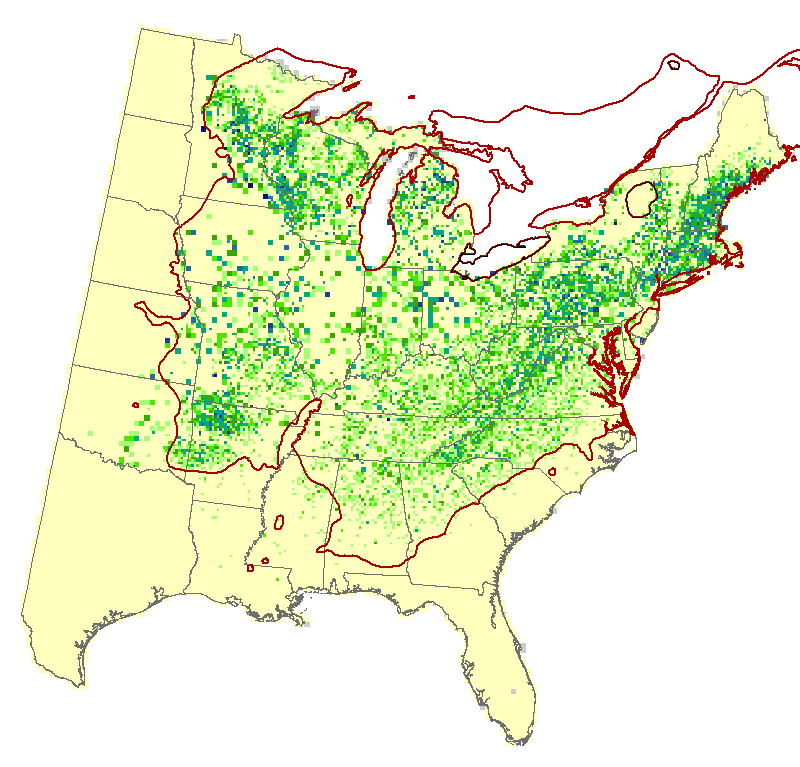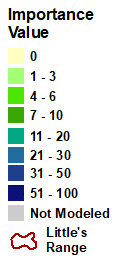northern red oak (Quercus rubra)
Model Reliability: Medium
| GCM SCENARIO | % Area Occ | Ave IV | Sum IV | Future/Current IV |
|---|---|---|---|---|
| Actual | 28.2 | 6.8 | 56081 | N/A |
| RFimp | 42.2 | 4.2 | 52007 | 0.93 |
| CCSM45 | 57 | 4.4 | 74481 | 1.43 |
| CCSM85 | 56.9 | 4.6 | 77143 | 1.48 |
| GFDL45 | 58.7 | 4.7 | 81466 | 1.57 |
| GFDL85 | 59.2 | 4.5 | 77726 | 1.49 |
| HAD45 | 57.4 | 4.7 | 78897 | 1.52 |
| HAD85 | 55.3 | 4.4 | 71140 | 1.37 |
| GCM45 | 59.8 | 4.5 | 78327 | 1.51 |
| GCM85 | 59.8 | 4.3 | 75369 | 1.45 |
Regional Summary Tree Tables
Summaries for tree species are available for a variety of geographies, in both PDF and Excel format. These summaries are based on Version 4 of the Climate Change Tree Atlas
Interpretation Guide
Northern red oak is a widely distributed species (24.4% of area, more than any other oak except white oak and sixth overall), dense, high IV, and abundant throughout most of the northern 2/3 of the eastern US. Its medium reliable model predicts a small increase in habitat all the way to the northern border of the country. The SHIFT model allows some potential for natural migration into those new habitats within 100 years. It is rated as highly adaptable to a changing climate and thus its overall capability is very good.
Family: Fagaceae
Guild: persistent, large-seeded, advance growthdependent
Functional Lifeform: large deciduous tree
| 5.4 | 1.39 |
| 0.13 |  |
MODFACs
What traits will impact northern red oak's ability to adapt to climate change, and in what way?:
Primary Positive Traits
Primary Negative Traits
Insect pests



